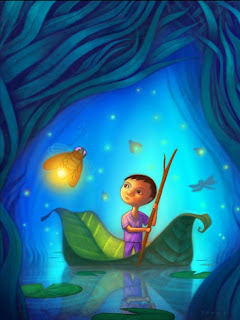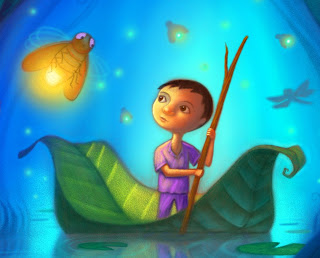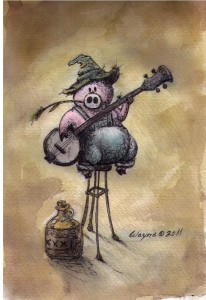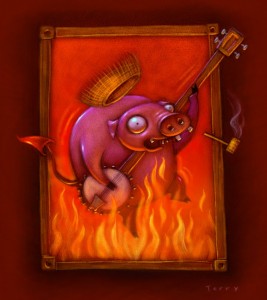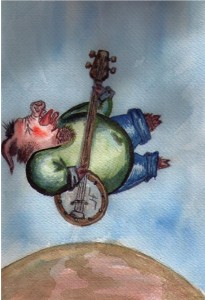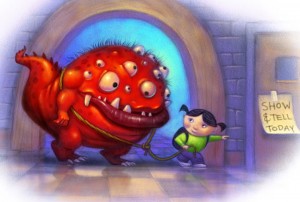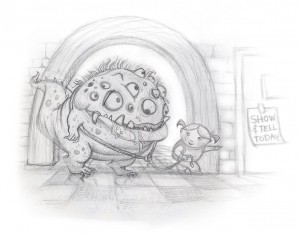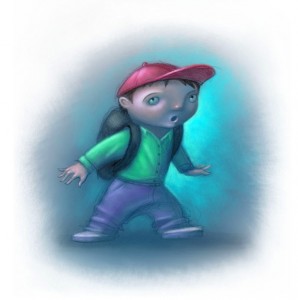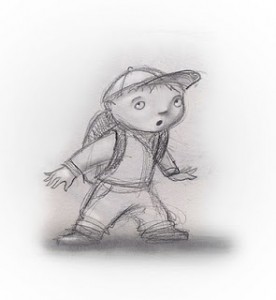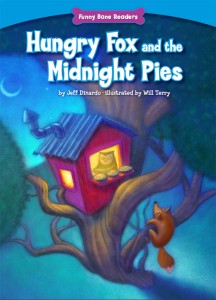How Much Money Can you Make, Illustration Children’s Books?
You could make $0 to $2,000,000 per book. But realistically, I would say that you can make $10,000 to $20,000 per book or $30,000 to $80,000 a year. (that is not a guarantee)
Brandon, an artist in Australia posed this question
I’m a graphic designer for Disney and from Sydney Australia and I am looking to get into children’s picture books on the side and hopefully down the track I’ll be able to do it full time. And I am just curious how much money you can make. I’ve heard, about $10,000 per book and it takes about 2-3 months to illustrate one if you are doing it full time. And if you had guaranteed work lined up, that’s four books a year, that’s $40,000 a year. Not very much money at all!… I know you shouldn’t make based solely on money, you should do it because you love it, but… You got to feed the family… I currently earn $73,000 a year as a graphic designer, and there is no way I could afford to provide for my family on $40,000 a year. At least not down here in Australia, we get paid more but the cost of living is high, in fact $73,000 a year doesn’t really cut it and so I am looking for extra income. Brandon
Few artists support their families just illustrating picture books.
Let me start by saying, I don’t know very many artists that are actually supporting their family on children’s book illustrations alone. There are a few BUT… Most artists, who are just illustrating children’s picture books, also have a spouse who is bringing home a paycheck too. I know a woman who is pretty successful at it and her husband works. I know a guy who is constantly busy doing picture books, and his wife is a full time teacher teaching school. And I know another and another who’s spouses work. Now maybe they COULD live off less and still GET BY on the illustrators wage but, cash is king.
I do know a husband and wife team who just do children’s books. We will address them a little later.
Artist, Will Terry supports his family with his art, by illustrating books and more.
Let me tell you how my favorite illustrator here at FolioAcademy, Will Terry, supports his family. Due to an autoimmune disease, his sweet wife does not work, she can’t and Will is there for forced to support his family including his oldest son who also has that same disease. He certainly does not live off his picture book income alone, especially the advances. So let me tell you where his income comes from.
He gets other freelance work, from other markets; some of them are in the text book and educational market. Sometimes he is doing editorial and advertising illustrations. He does school visits from time to time, they pay pretty well for the time that you put in, and it’s fun, and exhausting. He speaks at conferences and at colleges, on occasion, that adds to his income. He teaches part time at UVU, he teaches online with Jake Parker at SVS, he makes money from his e-book sales and story apps, as well as money from his YouTube channel. He has video sales here at FolioAcademy and royalties from some of some of the past children’s books. So his income is coming from a lot of different spokes.
Seth Godin talks about it like spokes of a wheel, multiple streams of income. That’s what rounds out Will’s financial year.
$10,000 Per Book is a Pretty REASONABLE Average Right Now
Like most artists, Will couldn’t make it on the children’s picture book commissions alone. He would only make from $30,000 to $60,000 a year and that doesn’t cut it when you have doctor bills and a family to support. Last year he only did three picture books and while his advances are a little higher than that, but still.
Let’s talk about advances. An advance is what the publisher pays upfront. Your royalties go toward the advance and once your royalties add up to the amount they advanced you, you start making royalties. Advances vary. Will’s first children’s book advance was the lowest he has been advanced and it was only $1000. That is very low; he was in college at the time. Now the most I’ve ever really heard of for an advance for a beginner, on a picture book is from about $12,000 to $15,000, that’s on the high end. So $10,000 is a pretty good average for a mid to a large size publisher. And anything below that is poss with smaller publishers. The longer you’ve been in the game and more popular you seem to be you can make more. Will has had advances over $20,000. So that too is a possibility.
A lot of artists are supplementing their income with little readers and other less significant projects while they chase the dream on the side or they are just illustrating for hire and making it work with out really chasing the dream.
CHASE THE DREAM: Award Math
I think what keeps a lot of picture book artists going is, or what they dream and hope for, is to get on the New York Times, best seller list, or win a major award like the Caldecott. So let’s do a little “award” math.
We have a friend who teamed up with his wife and did a picture book together and it sold really well. It just happened to be the right thing at the right time, done right. Then they did sequels. That first book ended up selling somewhere around 800,000 copies. So do the math, if you are the author and the illustrator, like our friend and his wife were, and the book sales for $15, and you get a total of 10% royalty, which equals $1.50 per book and if 100,000 copies sell, you make $150,000! They sold 800,000 copies and that is a lot of money; roughly $1,500,000 for one book. SWEET! Not bad for 3 months work. I think that is a big reason why we keep the dream alive. I think the main reason we want a big award, (and there are over 200 of these big awards that you could win in the US and overseas, the Caldecott is just the coolest one to win) is because it would be way cool and the money sure comes in handy. It’s a lot like acting. Most actors are just scratching by and doing other things or low budget acting jobs to make ends meet. I am sure they still love acting but they have to be dreaming of the big break. They have that dream, they want to keep it alive, and they are probably happy to be able to make a living doing what they love. Like an artist or a writer.
Caldecott Award Math
Let’s do some Caldecott math. Something to daydream about while you should be working. The Caldecott is a domestic award, for Americans only but it is also the BIG GRAND DADDY of awards for picture book artists. It is supposed to be awarded solely for the illustration merit BUT, I’ve never seen one go to a book with a ‘not so great’ story, so I believe that the judges are swayed by the story too. ANY WAY, there are about 200,000 libraries in the US. All of these libraries know that when a book gets the Caldecott award, their patrons will want to check out that book. So every library in America will purchase a few, or more, copies of that book. I know that many will purchase ten copies. Let’s say they all buy 5 copies. So 200,000 libraries buy 5 copies each, if you are the illustrator and you only make 50 cents per book that is still $500,000 dollars. Plus, I know that librarians purchase about 3-5 copies of Will’s more popular books yearly just because they get lost or damaged. So if they continue to purchase that award winning book each year, they will be constantly buying new ones. If a book wins the Caldecott, it will stay in print from then on too. So libraries buy a ton but what about the other market, I.E. Families, individuals, teachers and people who collect Caldecott winners, and other award winners. Arizona State chooses a book every year and buys one for every 5th grader in the state. How many is that. Plus you have that on your resume’ and other publishers will pay you huge advances. Caldecott math in a nut shell, win that award and YOU HAVE MADE IT!
There are 200 of these picture book awards to shoot for.
Remember there are around 200 awards that you could win, so it is possible. And today more than ever, you can make a living as an artist. Whether it be a fine artist, a musician, an illustrator, an abstract artist, or writer or dancer. With the internet and the millions of small businesses and dot coms that need script, text, performers, designers and artwork, there is money to be made and niches to be created and filled.
PUblisher know that Most books don’t even earn out
The only thing that will keep most artists in the dream is that possibility of really making it. But at the end of the day, if you get to do what you love to do, and you can make ends meet, you are successful. Publisher know that most books won’t earn out, which means, earn enough money to pay you the advance, which means you won’t be getting any royalties on top of the advance. Most just won’t, it is about a 7 or 9 to one chance that your book won’t earn out. Will Terry only has about 5-7 books that are earning any royalties right now. Publishers are publishing a lot of books, knowing that there is a big LUCK factor involved. They know that most books won’t go anywhere and they hope to publish a few that really do. They don’t even know which ones will succeed. So they are hedging their bets. They try to buy the best stories and hire the best artists and then cross their fingers and go on to the next one.
Make time to Illustrate picture books, and dream
My advice is this, just do it as a dream, do it on the side, find time, make time, love it and just keep in keeping on. Like any successful business, there is a lot of hard work in the beginning. Just do the best book that you can do, the one that will make you the happiest. Don’t do it for the award that is a slim chance. Do it for you, do your best and move on. Some will fly, some will die and one or two may win that major award.
I hope I answered the question, how much can you make? The sky is the limit, but realistically, $30,000 to $60,000 a year.
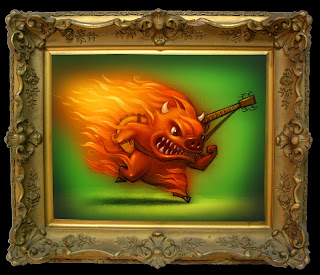 Here’s another banjo pig for the dueling banjo pig site put together by a couple of friends of mine – Stacy Curtis and Guy Francis. Stacy won’t eat bacon but will eat sausage – Guy won’t eat any sausage but will partake of bacon – at least they have their principles. Guy says although he’s been oraly fixated on some pork products he’s never participated in a greased pig race – he says, “rubbing grease on a pig might be enjoyable but how do you think it makes the pig feel?…probably pretty good but that’s not the point.”
Here’s another banjo pig for the dueling banjo pig site put together by a couple of friends of mine – Stacy Curtis and Guy Francis. Stacy won’t eat bacon but will eat sausage – Guy won’t eat any sausage but will partake of bacon – at least they have their principles. Guy says although he’s been oraly fixated on some pork products he’s never participated in a greased pig race – he says, “rubbing grease on a pig might be enjoyable but how do you think it makes the pig feel?…probably pretty good but that’s not the point.”

